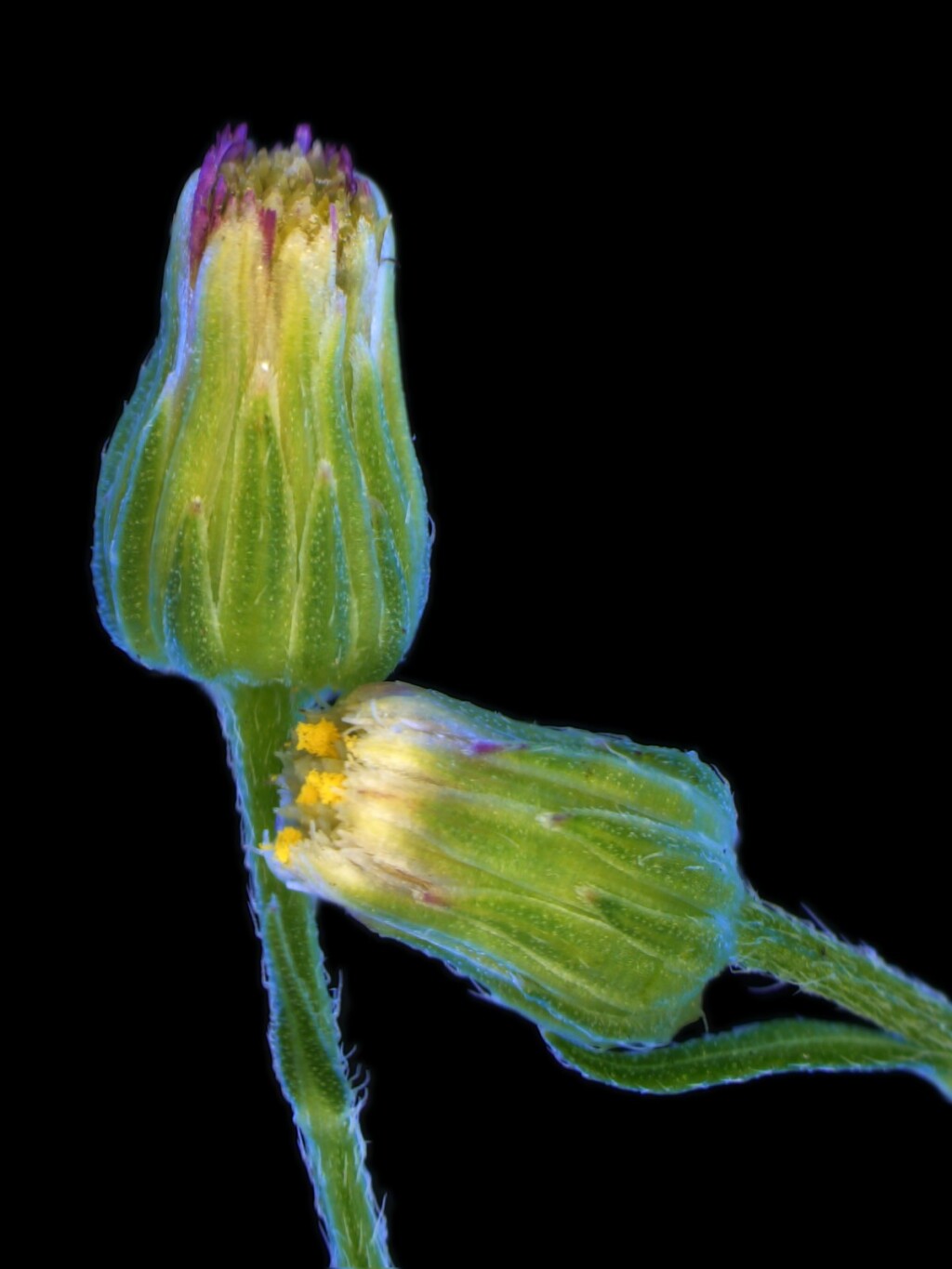Erigeron canadensis
L. Canadian FleabaneAnnual to c. 1.5 m high; stem mostly unbranched below inflorescence, greenish, striate, coarsely, but not densely, pilose or hirsute. Leaves usually coarsely pilose to hirsute mostly on margins and midribs, marginal hairs often more spreading in lower half of leaf, becoming somewhat appressed above; lower leaves oblanceolate, to c. 12 cm long, 3–10(–15) mm wide, entire or sparsely serrate; upper leaves narrow-oblanceolate to linear, 2–8 cm long, 2–7 mm wide, usually entire. Capitula numerous in a pyramidal panicle; involucres cylindric, 2.5–4 mm long; bracts linear to narrow-lanceolate, outer bracts sparsely hairy, inner glabrous, pale on the inner face (except for fine browish midrib) at maturity; receptacles 1.5–2 mm diam., virtually smooth to slightly roughened. Outer florets with small white ligules c. 1 mm long (sometimes tinged purplish). Cypselas oblong, 1–1.5 mm long; pappus bristles white, c. (1.5–)2–3 mm long. Flowers autumn.
GleP, VVP, VRiv, GipP, OtP, WaP, CVU, GGr, DunT, NIS, EGL, EGU, WPro, HSF, HNF, OtR, Strz, VAlp. Naturalised all States except NT. Native to North America. Although first collected in Victoria near Snowy Creek in 1891, reported only a few times since, from roadsides and a disturbed riparian site, mostly in eastern Victoria. Apparently not as successfully weedy as other species (or possibly overlooked).
 Spinning
Spinning



